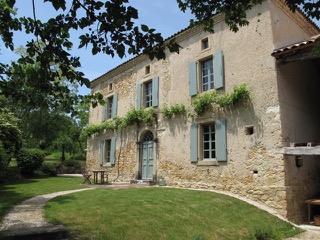After many years of helping clients to find their perfect property here in France based, in the first instance, on a detailed list of their requirements, what I have learned above all is that a property can tick every box but still not be ‘the one’. While most of us have easily defined opinions about what we know we like and dislike and many of our reactions to a property are conscious and objective, it seems that others are far more unconscious and visceral, bound up with our less definable personal instincts and experiences.
What is it about a space that makes us feel at home? On the most fundamental level, human beings have a need for shelter and security. But beyond that we also want comfort, beauty, stimulation, and connection with those around us and with the world outside.
When children are asked to draw a home, they commonly draw houses with steeply pitched roofs, even when they themselves live in flats, according to Lily Bernheimer, a researcher in environmental psychology. The pitched roof symbolises shelter and enclosure, which we need to make ourselves feel secure. Our homes need to feel like a place of refuge from the rest of the world. This psychology informs, albeit often unconsciously, our reaction to a property.
As Alain de Botton discusses in his book, The Architecture of Happiness, we may seek beauty from design, but there are all sorts of other aspects that we may not even be conscious of that lead us to find buildings and objects attractive or unattractive: “Our feelings of contentment are woven from fine and unexpected filaments. It isn’t sufficient that our chairs comfortably support us; they should in addition afford us a sense that our backs are covered, as though we were at some level still warding off ancestral fears of attacks by a predator.” The same can be said for our home.
He goes on to say; “When we approach front doors, we appreciate those that have a small threshold in front of them, a piece of railing, a canopy or a simple line of flowers or stones – features that help us mark the transition between public and private space and appease the anxiety of entering or leaving a house.”
Trends in current research support de Botton’s assertion that when it comes to design, we are subject to a host of neurological responses we have no control over, and which we may not even recognise. “We’ve been optimising our environments too much for our cognitive mind in recent years, and we need to ignite our senses and bring more awareness to what feels good rather than what we think.” Perhaps what we think we want isn’t actually what makes us feel at home. For example, memories of home are usually associated with the things in it, which you can touch and smell (“the attic and the cellar, the fireplace and the bay window, the hidden corners, a stool, a gilded mirror, a chipped shell”) rather than the building in its entirety, which you can only see.
Which is all a very long way of saying that, while a detailed list of criteria is very important in choosing the right home for you, equally as important, once you have made sure your practical considerations have been taken into account, is to then allow your unconscious self and your feelings to take the lead when viewing a house. I have said it before, but it bears saying again that, while it is important to use your rational, thinking head in working out what you are looking for practically in a property and a location, once this is established, it is equally as important to let your heart have a say.
If you need help or advice with finding your home in France, please get in touch: nadia@foothillsoffrance.com






You must be logged in to post a comment.